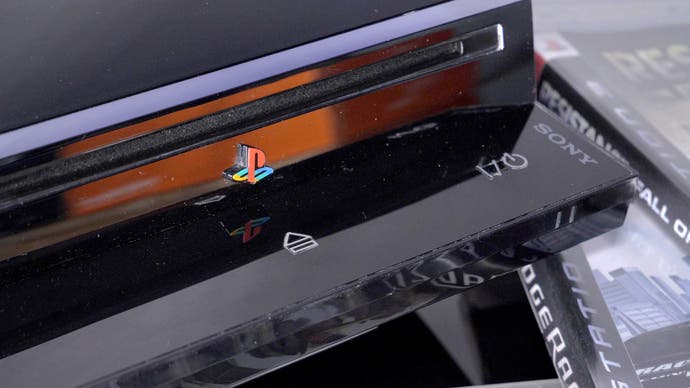PlayStation 3: chasing the 1080p dream, part two - revisiting WipEout HD, Pixel Junk and many more
2008-2009: the full HD voyage across an entire console generation continues.
Welcome to the second instalment of PlayStation 3: chasing the 1080p dream. This is DF Retro's most expansive project yet, spanning an entire console generation, with John Linneman looking to track full HD support for Sony's eighth generation machine including some of the best - and the worst - titles for the system. In the first episode, we tracked the PS3's beginnings, why Sony targeted 1080p in its marketing and what the final games looked like in the first couple of years of the console's life cycle. This second part continues into the PS3's 'difficult' period, where first-party triple-A juggernauts were thin on the ground with the 'Triple' still struggled to compete in them multi-platform arena up against Xbox 360. As for 1080p gaming... we bore witness to one unmitigated triumph, but elsewhere, the full HD picture wasn't quite as crystal clear as we might have hoped.
Still, moving into 2008, Sony made plenty of agreeable moves for its console. Big exclusives like Metal Gear Solid 4 and Motorstorm: Pacific Rift were crowd pleasers, the console received a welcome price-cut and mistakes of the past were rectified - rumble returned to PlayStation controllers, for starters. And with a couple of years of development under their belts, at least there was movement in the right direction for multi-platform titles. Game development started to skew more towards features and fidelity as opposed to resolution, meaning that the period covered by part two of our video looks pretty lean for the purposes of our story, even though the console's fortunes were improving overall.
It did, however, see the return of one of Sony's greatest franchises in the form of the wonderful WipEout HD - a game that still looks and plays beautifully even today. This works because Studio Liverpool started from PSP assets and built up the game with 1080p output resolution in mind, deploying an early form of dynamic resolution scaling to better stabilise performance. My tech interview back in the day is worth a read for more details and in the video above, it's great to see that the title still holds up.
Elsewhere, full HD offerings in 2008 were somewhat underwhelming, despite some highlights such as Pixel Junk Eden and Echochrome - simple, but highly effective and looking great at 1080p. FIFA Street 3 and MLB The Show delivered full frame pixel counts, but effectively made you choose between resolution or frame-rate - 1080p30 or 720p60, depending on the option selected on the PS3's front-end. Capcom's retro remakes 1942 Joint Strike and Wolf of the Battlefield: Commando also performed better in 720p mode - it would be some years before developers and publishers would accept that sometimes 2D art was a better fit for revamping older games (Bionic Commando from Grin is well worth checking out, however).
Moving into 2009, PlayStation 3 was revamped with its excellent Slim revision, while software started to find its form with some consistency with the brilliant Uncharted 2 and Killzone 2 finally arriving - but it was a muted time for full HD titles on the Triple. MLB 09 improved visuals in full HD mode, restoring the post-processing effects missing in its predecessor. However, 720p60 was the better choice, to the point where even if you had your PS3 configured for 1080p, you'd still get a 720p picture - only by disabling the 720p option on the front-end would you get the full HD output.
Other 2009 titles to target all the Ps included Katamari Forever, Fat Princess (1080p30 on Unreal Engine 3!) and a brace of titles inspired by the gravity defying epics Gravitar and Thrust. Just Add Water's debut - Gravity Crash - is reminiscent of Geometry Wars in that a vector graphics aesthetic was a perfect match for both the concept and the capabilities of the hardware, delivering a locked 1080p60. Even today, this game holds up well. Q-Games' Pixel Junk Shooter is even better, adding to the concept with a stunning fluid simulation, capable of working with 32,768 particles at 60Hz, by spreading the work in parallel across five of the six available SPUs on the Cell processor. Full HD may not have made too much of an impact in the triple-A space of the time, but expertly deployed, it could still make a big difference in games like these.
That's just the most basic of overviews of the content covered in this second part of PlayStation 3: the 1080p dream, so obviously, I highly recommend watching the full video above and if you missed the first episode, you can't fail to notice the embed above. Retro tier backers of the DF Supporter Program can get to see the whole episode, unabridged, right now, feeling warm and fuzzy in the knowledge that it's your support that makes massive works like this possible. Otherwise, please join us next week for part three of this epic, covering 2010 to 2012 and the arrival of Gran Turismo 5, amongst many others.



